Here you will find information on the molluscs that can be seen in Lake Geneva.
Photo: Marc Bernard
You can find out more about the molluscs of Lake Geneva in issue 113 of our quarterly magazine Lake Geneva region as well as in our themed leafletsour infographics or in our weekly column News in 60 secondsnumbers 77, 78 and 88.
Molluscs, whose name comes from the Latin Mollis (soft), represent one of the phyla containing the most species. Two classes are represented in Lake Geneva: bivalves and gastropods. Initially, the body of a mollusc was divided into three parts: the head, the foot and the visceral mass. The head contains the sensory organs and the mouth. The mouth contains a sort of raspy tongue with tiny teeth for grazing. Over the course of evolution, the "head" of bivalves gradually disappeared. The foot is a muscle used for movement. Here too, in bivalves, the foot atrophied slightly as the species became more sedentary. Finally, the visceral mass contains the viscera. These are protected by the mantle, which is the origin of the shell.
Uniquely aquatic, bivalves are commonly referred to as shellfish. Sheltered by their two shells, joined by a ligament, they feed by filtering water through their siphons. In this way, they capture micro-particles of food and plankton, as well as minerals and metals contained in the water. In Lake Geneva, the proliferation of the Quagga mussel (an invasive exotic species) may partly explain the crystalline appearance of the water. This intense filtration could eventually pose problems for other organisms in Lake Geneva that feed by filtering the water. Because of their ability to filter water, bivalves are good indicators of pollution. Heavy metals, phytosanitary products and other plastics are stored and accumulated inside the organism.
Gastropods are characterised by their shell, if they have one, which is typically twisted. Most species are hermaphroditic. Found both on land and in water, gastropods can be found practically everywhere. Some aquatic gastropods, such as snails, breathe through a pulmonary system. These species must therefore regularly go to the surface to collect oxygen. Herbivores, Lake Geneva gastropods feed on aquatic plants and algae.
Molluscs can very easily colonise new bodies of water as a result of human activity. The hypotheses of arrival of the various invasive species range from the ballast tanks of boats (for quagga and zebra mussels) to aquariums (Hydrobia of the Antipodes). It is therefore vital to protect Lake Geneva and other lakes by cleaning and drying your boat thoroughly before moving to another body of water. If you wish to dispose of an aquarium, it is advisable to take its contents to a pet shop.
All the species presented below are in our book of identification cards (sold in our shop)
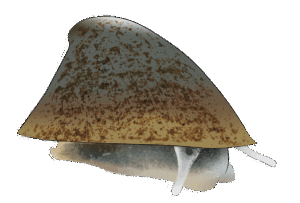
The River Chickweed has a conical shell reminiscent of a yellow to dark brown Chinese hat.
This mollusc is highly sensitive to pollution, making it a good indicator of water quality.
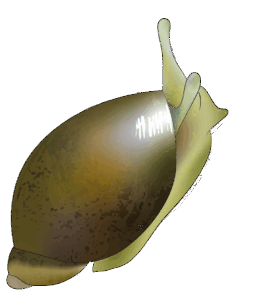
Snails have a clearly visible spiral shell with the last turn being wide, paunchy and lighter in colour.
They are the hosts of Trichobilharzia sp.a bird parasite whose larvae cause itchy skin and infections in humans (duck fleas).
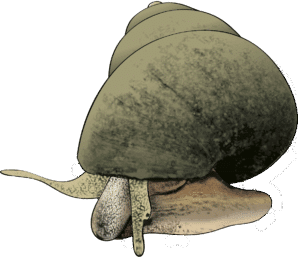
The Alpine Paludina has a spiral-shaped, conical, brownish-black shell with a watertight seal that enables it to close its shell hermetically and protect it from drought.
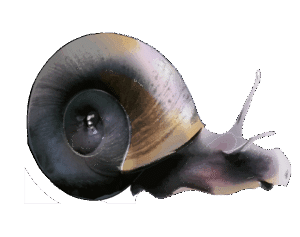
The shell of planorbes is round and flattened into a spiral shape.
Many species can be observed in Lake Geneva, most of which are indigenous.
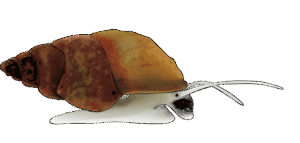
The Antipodean Hydrobia has a dark brown or grey shell with 7 to 8 curved turns.
This species is native to New Zealand, with populations of up to 20,000 individuals per square metre.
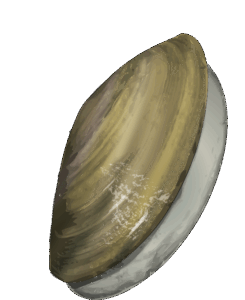
The largest mollusc in Lake Geneva.
Quagga mussels tend to cling to it, which limits its ability to move and filter.

The Asian Corbule has a rounded, pale yellow or brown shell. The growth lines are clearly marked.
This mollusc can be eaten like a clam.

The Zebra Mussel has a zebra-covered shell and a flat base, while the Quagga Mussel has brownish and whitish zebra stripes and a rounded base.
These mussels arrived from Eastern Europe on boats, either clinging to the hulls or carrying their larvae in the water inside the boats.
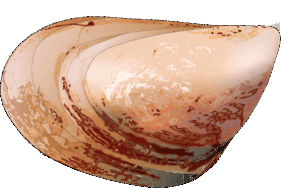
Although they are not indigenous, they have allowed the return of a bird, the scaup, which particularly appreciates them.
Be careful, they're very sharp!